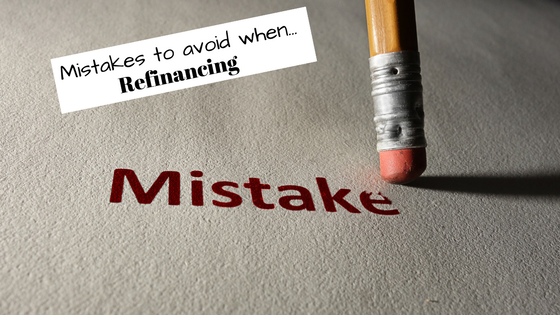Home Loan Refinancing Mistakes You Should Avoid
By Shane | Uncategorized

Refinancing your mortgage is not as scary as you imagine. So, how do you get on board and save more on your home loan? According to a new research, the number of mortgage holders considering refinancing continues to grow over the past year. The latest housing finance data from the Australian Bureau of Statistics (ABS) shows that the number of home loans being refinanced increased by 20% in the past twelve months.
While refinancing can potentially save you thousands of dollars on your home loan, there are still some borrowers who often fall into certain traps which costs them more money in the end. So, what are the home loan refinancing mistakes you should avoid and what can you do to avoid them?
Your property decreased in value
There are some mortgage holders who anticipated that their property has increased in value from the time they bought it. Unfortunately, that isn’t always the case. You may actually have to pay Lenders Mortgage Insurance (LMI) if your property loses value or hasn’t increased enough to take your lending under 80%. It considered as one of the fess that could cost thousands of extra dollars and could probably supersede the benefits of a more competitive rate.
Most likely, you won’t know what your home is worth until the valuation is done. However, you can get an indication and there are a few ways to do that. A number of valuation tools are available for you online. Those tools can provide you with an indication of what your property is worth in the current market.
You can also contact us for a complimentary Property Report that will contain an approximate value for your property.
You don’t include exit fees and costs.
You’ve assumed that refinancing to a home loan with better interest rate would save you money but that isn’t necessarily the case. Exit fees for your current loan and establishment fees for your new home loan may actually exceed the savings of a lower interest rate. The government abolished exit fees for variable home loans. However, those fees may still apply to you if you obtained your loan before July 2011.
It is also important to consider the other fees and features of a home loan with a better interest rate. You may be able to save interest with an offset account but if you refinance and lose those features, you may actually be worse off.
You’re refinancing after default.
Keep in mind that you need to approach refinancing the same way you would if you were applying for a brand new home loan. It’s important not to assume that you will be approved for refinance just because you were approved for your current home loan. Lenders will still have to assess your current financial status.
The lender will check your credit report when assessing your home loan. Any breaches may affect your borrowing power and may even result to a declined loan application. You need to check if your recent defaults on a loan, credit card or utility bill has been listed on your credit report. It’s really important that you get a copy of your credit file.
The first best step to refinancing is to find a lender with a broad range of competitive home loans with plenty of features. Pearl Financial is a mortgage broker specialist who can help answer any questions you have. You can leave your details here and we’ll be in contact with you as soon as possible.
Session expired
Please log in again. The login page will open in a new tab. After logging in you can close it and return to this page.